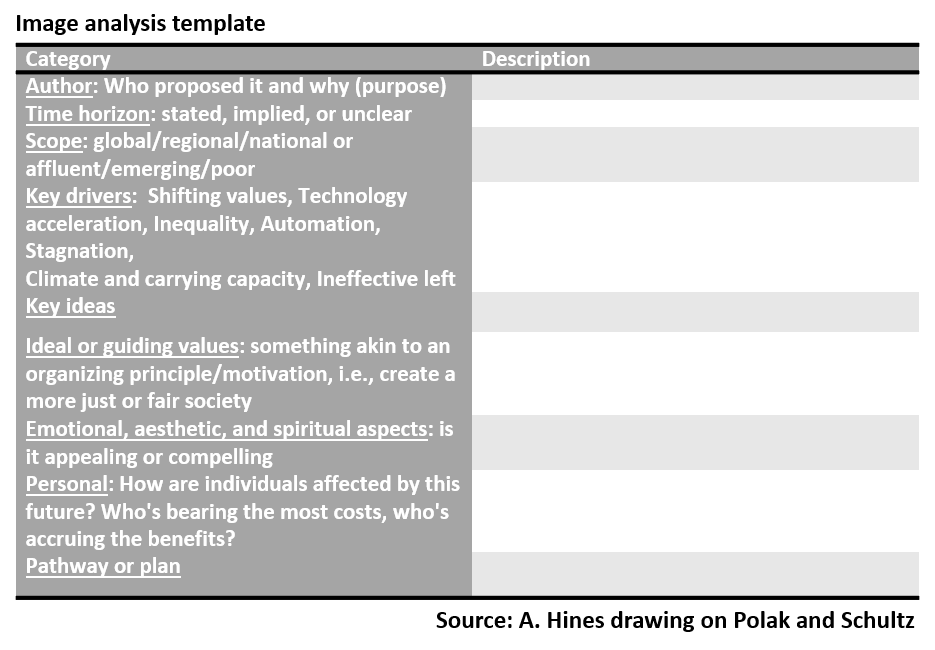It’s finally getting close, as I get to the penultimate chapter of Imagining After Capitalism which covers the Horizon 3 Images. Early in the research I began searching for a way to analyze the images in a consistent fashion. Of course, one starts with Polak’s Image of the Future. I had the great luck to host a summer elective course taught by U of Houston Adjunct Faculty and futurist extraordinaire Wendy Schultz on Images of the Future. I learned a ton from Wendy on how the think about and analyze images. She is the go-to source on the topic.
I thought it would be useful to whet your appetite a bit and share the categories I used to analyze the Horizon 3 images of the future. I’ll include a few observations on what the categories revealed (or not).
- Author: Who proposed it and why (purpose) ; this is “always” a super-helpful category – the why is very revealing: I typically require students to do this investigation in all their assignments.
- Time horizon: stated, implied, or unclear; interestingly, but not surprisingly, very few of the images had a specific timeframe.
- Scope: global/regional/national or affluent/emerging/poor; this too was often not specified but could be inferred.
- Key drivers: since I identified seven key drivers — Shifting values, Technology acceleration, Inequality, Automation, Stagnation, Climate and carrying capacity, Ineffective left – I noted which of the seven were emphasized by each particular image.
- Key ideas: a brief synthesis of the main ideas of the images.
- Ideal or guiding values: something akin to an organizing principle/motivation, i.e., create a more just or fair society; similar to why the author wrote it…very instructive.
- Emotional, aesthetic, and spiritual aspects: is it appealing or compelling? It’s subjective, but also important; I did my best to be consistent.
- Personal: How are individuals affected by this future? Who’s bearing the most costs, who’s accruing the benefits? In many cases this was pretty vague.
- Pathway or plan: I’m not going in depth on this, as I think it’s a whole separate book, but I do not go into detail on whether or to what extent the authors tackle this.
Getting closer!!! – Andy Hines
Leave a Reply